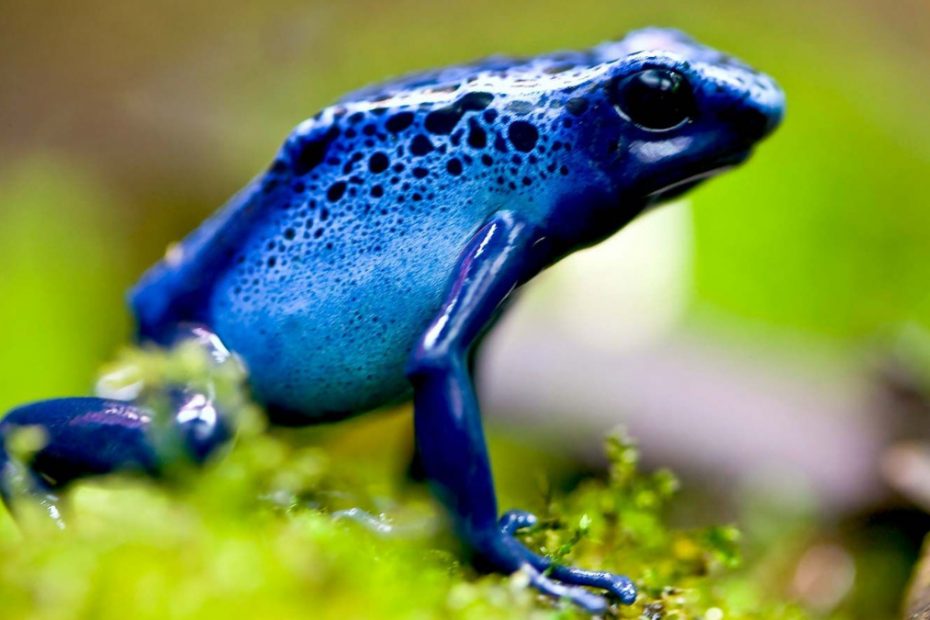Frogs are often found in wetland environments and water-based habitats, which are naturally humid. While the humid environment can lead other animals to sweat, frogs employ unique mechanisms to regulate their body temperature.
So the question here is, do frogs sweat? No, they don’t, as they don’t have sweat glands like other mammals. Due to being cold-blooded, they can regulate their body temperature. Frog skin does this through evaporation. It also has multiple functions in its physiological processes.
You’ll be amazed by how these amphibians adapt to their environment and maintain optimal body temperature. In this article, we will debunk the frog sweating myths, unraveling the mysteries of their cooling mechanisms and the remarkable adaptations of frogs. Let’s get started.
Do Frogs Sweat? Debunking The Frog Sweat Myth
As we said earlier, frogs do not have sweat glands like humans and other mammals. Instead, they absorb water through their skin to regulate their body temperature. This has been confirmed through scientific research and evidence.
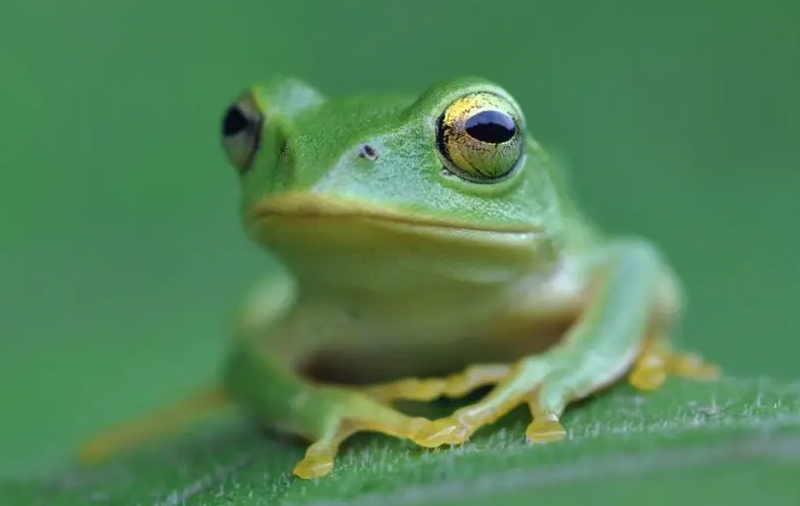
Studies have shown that the skin of frogs is highly permeable to water and other substances. That allows them to absorb moisture from the environment. This is particularly important for frogs living in dry climates with scarce water.
While some species of frogs have been found to secrete small amounts of fluid from their skin, this is not the same as sweating. Specialized glands do not produce the liquid or serve the same purpose as sweat in humans and other mammals.
Frog’s Cooling Mechanisms
Let’s find out the secret of a frog’s body cooling mechanism even in scorching heat;
Skin Respiration
Frogs have a unique way of breathing called skin respiration. Since they don’t have lungs like humans, they use their skin to take in oxygen and release carbon dioxide. This permeability allows for efficient gas exchange with the surrounding environment.
Oxygen from the air or water enters their bloodstream, while carbon dioxide, a waste product, leaves their bodies. This process is significant for frogs living in watery environments. Their skin has lots of blood vessels, which makes it easier for them to exchange gases.
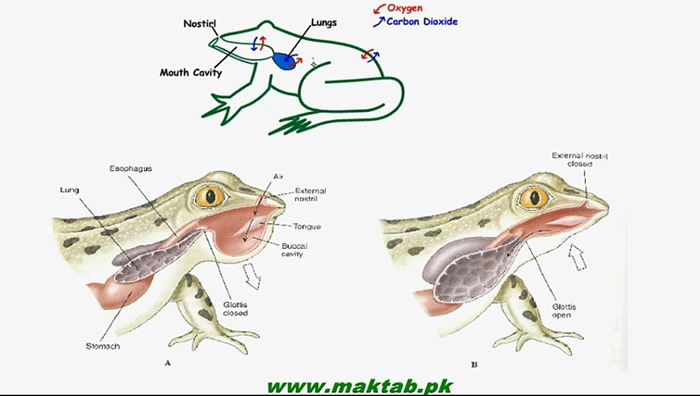
Skin respiration allows frogs to survive in different habitats, like wetlands and rainforests. It’s a unique adaptation that helps them get the oxygen they need to stay alive and thrive in their surroundings.
Mucus Secretion
Frogs produce a slimy substance called mucus. This mucus layer keeps their skin moist, crucial for their well-being. Study shows it also helps them with respiration and getting oxygen.
Additionally, the mucus on their skin allows gases to pass through easily, helping them breathe. Lastly, the mucus protects against harmful pathogens and parasites, keeping them away from the frog’s skin. This protective layer is vital in keeping frogs healthy and safe in their environment.
Behavioral Adaptations
Frogs have evolved behavioral adaptations to maintain their body temperature effectively. One of these adaptations is seeking shade or finding shelter underground to escape direct sunlight and excessive heat.
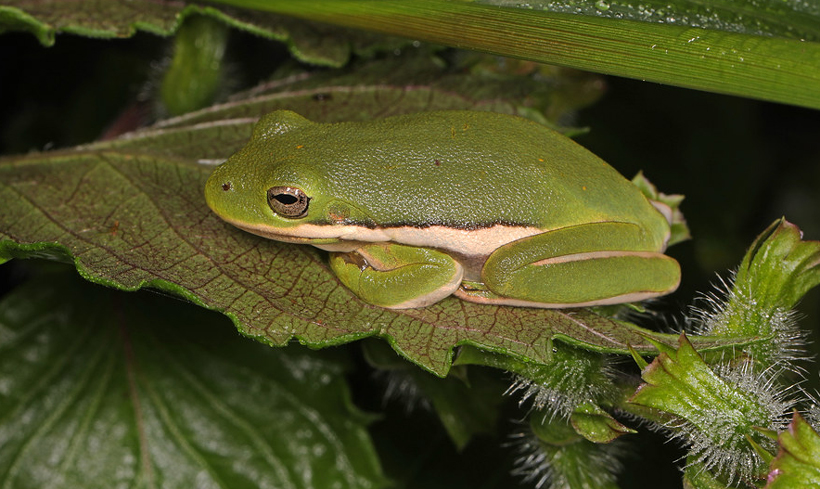
Furthermore, frogs frequently rely on water bodies, such as ponds or streams, to regulate their temperature. They do this by immersing themselves in the water or sitting near it. It allows frogs to dissipate excess heat and maintain a comfortable body temperature.
These behavioral strategies showcase the resourcefulness of frogs in adapting to their surroundings. By avoiding these extreme conditions, frogs can prevent overheating and dehydration.
Thermal Conductivity of Water
Frogs use water’s unique thermal conductivity method to regulate their body temperature. Unlike air, water has higher thermal conductivity, which can absorb and dissipate heat more effectively. Taking advantage of this property, frogs make use of water bodies as a means of temperature control.
Frogs may spend time in or near water to cool down during hot periods. By immersing themselves in water or staying close to its vicinity, they allow the water to draw away excess heat from their bodies, helping to maintain a comfortable temperature.
This reliance on water as a cooling mechanism demonstrates their remarkable ability to adapt and thrive in various habitats with fluctuating temperatures.
Watch this youtube video to get a better idea about frog’s ability to adapt to extreme temperatures:
Frog’s Cooling System For Different Species
Different types or species of frogs have different ways of cooling themselves down. Check out the table below;
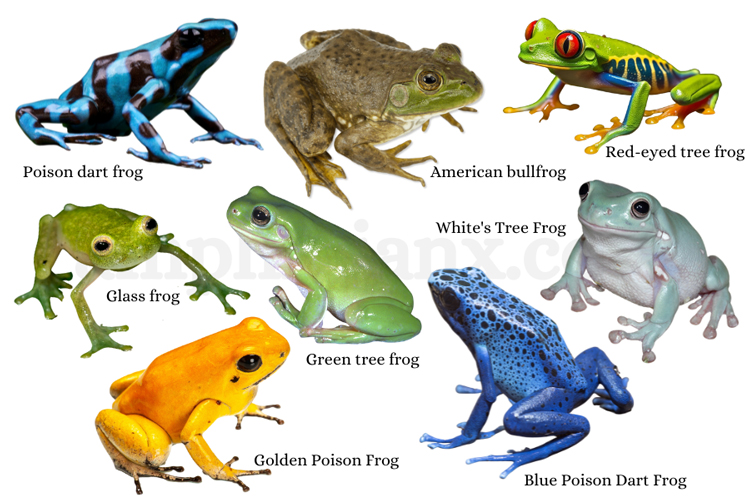
| Frog Species | Cooling Strategy Name | The Strategy |
|---|---|---|
| Red-eyed tree frog | Evaporative cooling | Secretes mucus on the skin, which evaporates and lowers body temperature. |
| Poison dart frog | Toxic skin secretions | Releases small amounts of poisonous secretions that evaporate, providing a cooling effect. |
| American bullfrog | Bladder cooling | Absorbs cool water through the skin, storing it in the bladder to regulate body temperature. |
| Green tree frog | Increased water intake | Actively drinks water to stay hydrated and maintain body temperature. |
| Glass frog | Behavioral cooling | Seeks shade under leaves or vegetation and utilizes skin secretions for evaporative cooling. |
| Golden Poison Frog | Toxic skin secretions | Evaporates toxic secretions to cool body temperature. |
| Blue Poison Dart Frog | Toxic skin secretions | Utilizes evaporating toxic secretions for cooling effect. |
| White’s Tree Frog | Behavioral Cooling | Seeks shade in more excellent areas and uses skin moisture for evaporative cooling. |
FAQs
Check out these commonly asked questions about frogs’ sweat;
While frogs don’t sweat, they can still experience dehydration if they don’t have access to enough water. Frogs have specialized adaptations to conserve water, such as their ability to absorb moisture through their skin and efficient kidney function.
No, the moisture on a frog’s skin is not equivalent to sweat. While frogs may appear moist or even slimy, the moisture on their skin comes from mucus secretions, not sweat. This mucus serves multiple purposes, including maintaining skin hydration, aiding respiration, and providing a protective barrier against pathogens and parasites.
Frogs absorb water through their skin and get water from their food. They also have a specialized area in their cloaca that helps to drink water.
Conclusion
Despite not sweating, frogs have alternative methods to cool themselves down. They rely on fluid glands, such as mucus secretions, to maintain moisture on their skin, aiding in temperature regulation. Additionally, frogs employ various behavioral strategies to avoid overheating, including seeking shade, burrowing, and utilizing water bodies for cooling.
This article cleared up the confusion about whether frogs sweat or not. Let’s hope it was of help and we can deepen our appreciation for these remarkable amphibians and their important ecological role in the natural world.

Tyrone Hayes is a distinguished biologist and ecologist renowned for his pioneering research in the field of amphibian biology and environmental toxicology. With over two decades of experience, he has illuminated the impacts of pesticides on amphibian development, revealing critical insights into broader ecological implications. Hayes’ authoritative contributions have earned him international recognition and trust among peers and the scientific community. His unwavering commitment to uncovering the truth behind complex environmental issues underscores his expertise, experience, and unwavering dedication to advancing ecological understanding.
